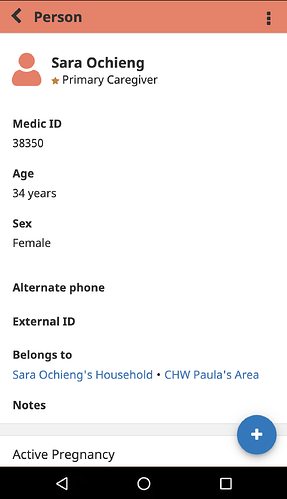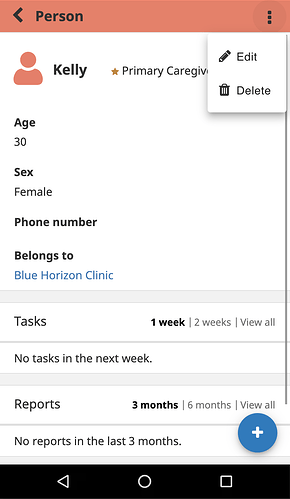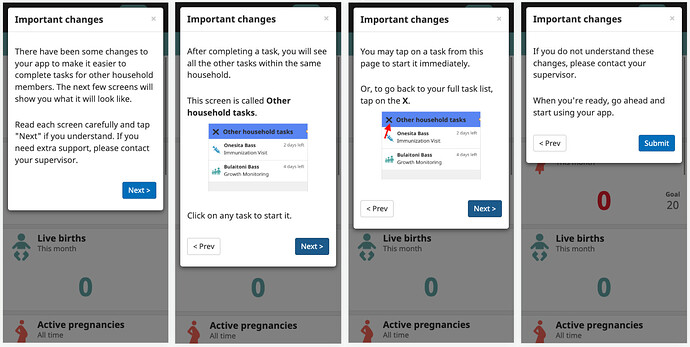We’re excited to announce the release of v4.2.0 of the CHT-Core Framework ![]()
![]()
![]()
Some highlights are:
Floating Action Button
The additive actions (creating reports, places, people, etc…) have moved from the bottom action bar to a Floating Action Button that opens a menu with all actions. This change aligns the CHT more closely with Android UX and material design patterns, and applies to the Messages, Reports, and Contacts tab.
NOTE: The bottom action bar can be temporarily re-enabled for specific users.
More Options menu
The Export, Edit, and Delete actions have moved from the bottom action bar to a new More Option (⋮) menu located on the top right side of the screen. This change aligns the CHT more closely with Android UX and material design patterns, and applies to the Messages, Reports, and Contacts tab.
NOTE: The bottom action bar can be temporarily re-enabled for specific users.
Training Cards
A new feature was added to help health workers learn about changes to their CHT app remotely, directly in their app. Training Card content might include information about a newly deployed feature, changes to a care guide, or simply a reminder about an underused feature or workflow.
Support automatically creating users when contact is added
When configured, users will automatically be created when certain types of person contacts are added. No intervention from a system administrator is required in this process.
For example, a supervisor could onboard a new CHW just by creating a new person contact for them with a “create contact” form. The new user for the CHW will automatically be created and the CHW will receive an SMS message containing the token login link. This link will allow them to login as the newly created user.
Extension libraries
The extension libraries are blocks of code that are cached with the CHT web application giving app developers a powerful tool to extend the CHT. An example of a use for this feature is to provide a function to calculate a risk score based on a machine learning model. The function can then be called passing in values from app forms and return the result to be stored with the report.
Initial replication improvements
After refactoring the initial replication mechanism, which is the process of synchronizing data for the first time between the user’s device and the app’s server, it is now at least 8 times faster than before. Look at this performance comparison table:
| No. concurrent users | Before (median) | After (median) |
|---|---|---|
| 1 | 251s | 18s |
| 10 | 86s | 11s |
| 100 | 25m | 2.5m |
We’ve also implemented loads of other improvements and fixed a heap of bugs. Read the release notes for full details.
Following our support policy, version 4.0.x is no longer supported. Projects running this version should start planning to upgrade in the near future. For more details read our software support documentation.
Check out our roadmap to see what we’re working on next.


